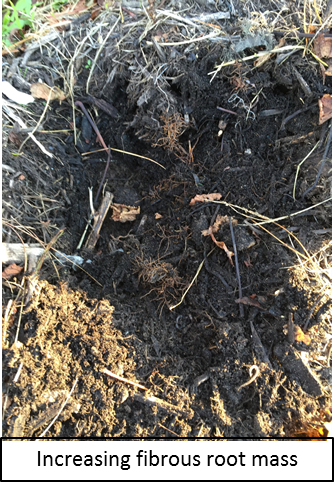
![]()
Increase Your Bottom Line$ with Compost/Mulch
Meeting the challenges of producing food into the future will always be in front of the grower's mind.
Issues relating to food safety, residue levels governing costs of production are some of the challenges and the search for meeting all of these is always a constant.
So finding anything that will reduce the amount of chemicals used both to the soil and the plant should always be considered into your orchard management regime.
What is it that can be used to reduce those chemical inputs?
Anything that can considerably reduce the amount of weedicide, chemical fertiliser and even pesticides in one go would sound too good to be true but there is such a product and that is compost, but you need to look at the ancillary benefits.
Compost is a product that is well entrenched in biodynamic production but in conventional production it is considered too expensive not worth the extra hassle of applying it and don't really know if it is improving the crop on the trees or not anyway!!
But let us look at what can be achieved with compost, firstly if applied at the correct amount thickness under the tree line (100mm) the suppression of weeds for a majority of the season is practical to achieve, especially if the weeds prior to application are removed or burnt off.
Next to consider is the root zone, by placing this much under the tree line the root zone is much cooler closer to the surface providing the environment to have a greater fibrous root mass which is the driver for efficient nutrient uptake especially calcium.
Then there are the well-known benefits of reduced water use and the improved soil structure which increases the cation exchange capacity reducing leaching of nutrients and evaporation from the soil. The other well-known benefit are the increased activity of soil microbial biota which increases the breakdown of nutrients unavailable to the plant into the available form, and the improved levels of beneficial biota which feed on many of the pests that complete their life cycle in the soil namely thrips, fruit fly, carpopholius, etc. This improved soil structure will also improve root aeration and water infiltration. To read more, see below to download article......

